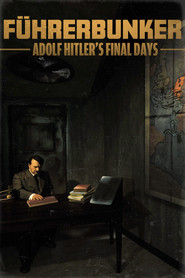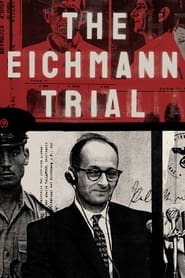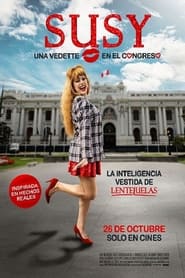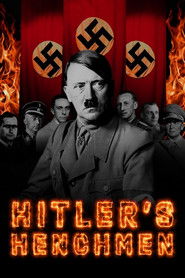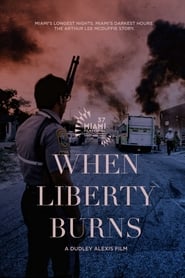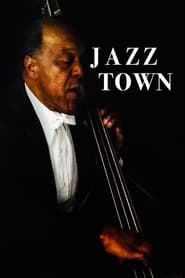Top Rated History Movies on Google Play Movies - Page 76
-
Führerbunker: Adolf Hitler's Final Days
2020
Germany is falling. Once the all-powerful country, now being crushed in the Second World War. Adolf Hitler is in hiding. The feared dictator no longer publicly supports his people. The man that fulled this chaos, leaving the country to crumble. These are Adolf Hitler's final days. Inside the Fuhrerbunker. -
Healing Waters
2023
Healing Waters
2023
A visually stunning and thought-provoking biopic documenting the life and career of renowned photographer Linda Troeller. Her work explores the spiritual properties of water and the intricate aspects of female sexuality. The film presents a mesmerizing narrative that gracefully blends elements of personal discovery, artistry, and feminism. -
Shakespeare: The Truth Behind the Name
2021
Literary history's greatest mystery? Who created the greatest works of iambic thunder in the English language, and who lived the courtly life that is written about in the works of Shakespeare. An uneducated tradesman from Stratford? -
Marcella
2025
Marcella
2025
Marcella Hazan didn’t just teach Italian cooking—she changed the way America eats. Fearless, passionate, and exacting, she introduced authentic recipes to millions. Julia Child called Marcella “my mentor in all things Italian.” Featuring Jacques Pépin, Danny Meyer, April Bloomfield, and Lidia Bastianich, this intimate portrait reveals the bold woman who forever shaped home kitchens. -
Portrait of a Soldier
2024
Set during the last days of the Vietnam War, Miles, an American soldier, tries to escape. With the company of Josiah (another soldier) and Isaac (a photographer), the three abandoned men try to leave once and for all while Miles remembers his past, the only beautiful thing he has left to live for. -
Heart of a Servant: The Father Flanagan Story
2024
Father Edward J. Flanagan is a familiar name to many Americans, often for the Oscar-winning 1938 film starring Spencer Tracy about Flanagan’s groundbreaking child welfare organization. But the story extends far beyond that, to a man whose name and legacy are still well-known as far as Germany and Japan. Flanagan gained influence and admiration over the course of his life from Presidents, CEOs, celebrities and more, but none mattered more to him than that of the children for whom he tirelessly worked. A sobering reminder of this was during WWII, as Flanagan saw droves of former Boys Town citizens go off to war. In fact, so many former Boys Town boys named Flanagan as their next of kin that the American War Dads Association named him as America’s No. 1 War Dad. -
1933: The Fall of Weimar Republic
2020
The Weimar Republic came to bear for many the humiliation of World War I and the blame for all its accompanying hardships. Despite a few years of stability, the Weimar Republic faced issues such as hyperinflation and the Great Depression, which drove many Germans into the arms of radical and extremist political parties. From this political uncertainty rose a demigod, an unexpected leader who promised to revive Germany to the powerful country it once was. Adolf Hitler converted democracy into a dictatorship, causing the fall of the Weimar Republic. -
Rommel: The Soldier, the Son, and Hitler
2021
A rare insight into the military career and personal life of Germany's most famous Second World War commander, Field Marshal Erwin Rommel. Told from the perspective of his son Manfred, it tells what happens when a career soldier runs afoul of a dictator. Highly decorated and one of Hitler's favourite commanders in the early years of World War II, the 'Desert Fox' was something of an enigma. Never a member of the Nazi party, Rommel detested the blending of politics and war. He would quickly discover that both were always in play in Hitler's Germany. Greg Kinnear narrates. -
Elizabeth I: Tudor Queen
2023
A woman in a man's world. Though strong-willed, intelligent and passionate, Queen Elizabeth I is keenly aware that her life is in constant peril. With her died the Tudor dynasty, but the changes she made to politics and parliament show the beginnings of the conception of the England that we know and love today. -
Oscar Wilde About America
2025
This big-hearted romp from New York City to Hollywood, CA leads Oscar to the queer joy, love, and liberation that eluded him 141 years ago, with the attendant themes of diversity, identity, and inclusion beautifully expressed in the film's original song, "Be Yourself, Everyone Else Is Taken", based on one of Wilde's most popular quotes. Filmed in London and in multiple locations across the United States, the film stars West End star Oscar Conlon-Morrey as Oscar Wilde, and features film/TV/stage veterans Rosemary Harris and Kate Burton. -
Gadera
2024
Gadera
2024
In 1912, driven by greed, the British embark on a Himalayan expedition in colonial India. Yet, the Kumaoni and Garhwali people retaliate, highlighting the grave consequences of imperial ambition through guerrilla warfare. -
The Eichmann Trial
2025
The Eichmann Trial
2025
In 1961, history was on trial... in a trial that made history. Just 15 years after the end of WWII, the Holocaust had been largely forgotten. That changed with the capture of Adolf Eichmann, a former Nazi officer hiding in Argentina. Through rarely-seen archival footage, The Eichmann Trial documents one of the most shocking trials ever recorded, and the birth of Holocaust awareness and education. -
Myall Creek: Day of Justice
2024
Based on the story of late 1830's colonial Australia, where an unspeakable crime against First Nations people caused an upheaval between law and order. -
Route 60: The Biblical Highway
2023
Carving through the heart of the Promised Land is the Biblical spine of Israel, sometimes referred to as the “Path of the Patriarchs” and officially designated as “Route 60.” This trek is far more than a two-lane highway; it is a historic, sacred link to the roots of Judaism and Christianity and the stories of the Old and New Testaments. Follow world-changing diplomats David Friedman and Mike Pompeo as they venture down this sacred road, treading the very ground Abraham, Moses, Jacob, King David, and Jesus once walked. Discover the history, witness the healing, and realize the hope along Route 60, the Biblical Highway. -
Susy: Una vedette en el Congreso
2023
The story of a girl who grows up full of dreams, with parents who didn't understand that her mischief hid her intelligence. -
Hitler's Henchmen
2020
Hitler's Henchmen
2020
The regime of the Nazi Party inflicted terror, destruction, and brutal horrors throughout the Third Reich. Ideas of making Germany great again indoctrinated the German people to support them indefinitely, hiding the mass slaughter of human life behind their convincing propaganda campaigns. Hitler and his disturbed Henchmen made this genocide possible, each man as deranged as the next. Their dedication to the Fuhrer was absolute, and to gain his validation they were willing to do anything. -
For Old Times' Sake
2022
For Old Times' Sake
2022
Two old friends meet after years of not seeing each other: Miguel, a prisoner who is about to be killed by a troop of the Mexican Revolution; and Luciano, the General of the troop and the man tasked with commanding Miguel’s execution. -
One Sweet Night
2020
One Sweet Night
2020
The tragic true story of Doctor Ossian and Gladys Sweet, a prominent young Black couple in 1920s Detroit. -
When Liberty Burns
2020
When Liberty Burns
2020
An in-depth analysis on the 40th Anniversary of the life and untimely death of Arthur Lee McDuffie at the hands of Miami Dade police officers. -
JazzTown
2021
JazzTown
2021
Denver’s iconic and Grammy Award-winning musicians reveal the secrets of their success and longevity in the music business while warning the young lions to whom they pass the torch to stay relevant in a marketplace both treacherous and brutal. The majestic Rocky Mountains tower over a bustling metropolis filled with steamy and romantic nightclubs where jazz flourishes on stage. JazzTown features never seen before live concert footage on historic stages that have now crumbled due to economic stresses of the Covid Pandemic. ~ Dianne Reeves, 5-time Grammy Award winner for Best Jazz Vocalist ~ US Senator John Hickenlooper (former jazz club owner) ~ Ron Miles (Colorado Music Hall of Fame, Joshua Redman, Bill Frisell, Ginger Baker) ~ Charlie Hunter (Snarky Puppy, Christian McBride, Stanton Moore) ~ Art Lande (Mark Isham, Gary Peacock) ~ Ayo Awosika (Session Singer on Soundtracks to: Wakanda Forever, Nope, Dune, The Lion King ... tours with Miley Cyrus,) and many more.
 Netflix
Netflix
 Amazon Prime Video
Amazon Prime Video
 Apple iTunes
Apple iTunes
 Apple TV Plus
Apple TV Plus
 Disney Plus
Disney Plus
 Google Play Movies
Google Play Movies
 Paramount Plus
Paramount Plus
 Hulu
Hulu
 HBO Max
HBO Max
 YouTube
YouTube
 fuboTV
fuboTV
 Peacock
Peacock
 Peacock Premium
Peacock Premium
 Amazon Video
Amazon Video
 The Roku Channel
The Roku Channel
 AMC+
AMC+
 Kocowa
Kocowa
 Hoopla
Hoopla
 The CW
The CW
 Vudu
Vudu
 Starz
Starz
 Showtime
Showtime
 PBS
PBS
 Pantaflix
Pantaflix
 FXNow
FXNow
 Tubi TV
Tubi TV
 Kanopy
Kanopy
 Comedy Central
Comedy Central
 Crunchyroll
Crunchyroll
 Microsoft Store
Microsoft Store
 Redbox
Redbox
 Sun Nxt
Sun Nxt
 ABC
ABC
 DIRECTV
DIRECTV
 Crackle
Crackle
 Fandor
Fandor
 Plex
Plex
